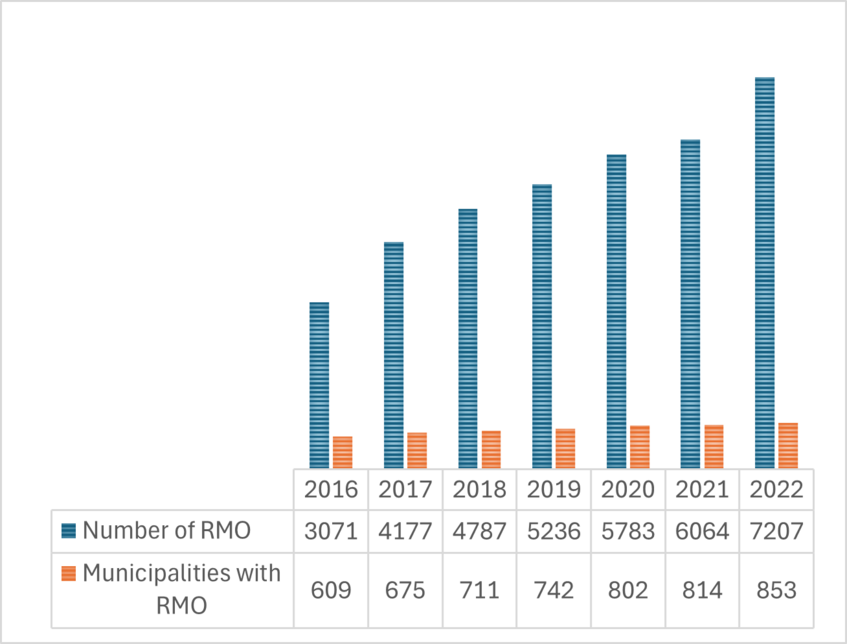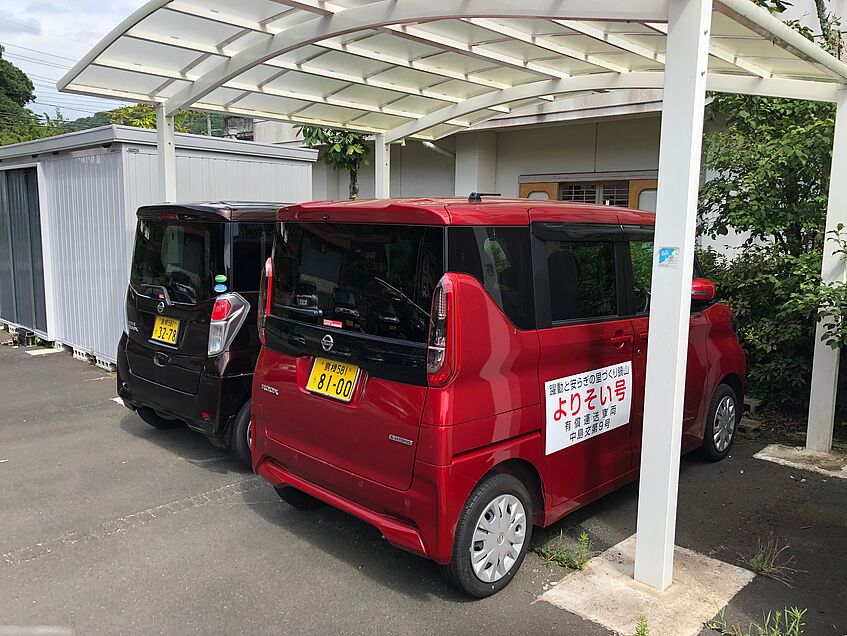Governing Decline
Changing State-Society Relations in Rural Japan
Background
This book project investigates how state-society relations in rural Japan change in the context of rapid aging, depopulation, and eroding public service provision, and the mid-2000s municipal merger wave. These interrelated developments gave weight to the question who is responsible for “governing decline” in rural Japan – the state, local communities, or both? In 2014, the Japanese government began to promote so-called regional management organizations (RMO, chiiki unei soshiki): civic self-governance bodies which are expected to devise and implement plans to supplement public and private service provision at the sub-municipal level. The number of RMO has increased rapidly since 2014, which underlines the growing demand for civic self-governance especially in rural areas from which the state has retreated.
So far, however, RMO have received virtually now scholarly attention outside Japan. This book asks where these organizations come from, what they do, and how they relate to the (local) state.

Source: Adapted from MIC 2023.
Analytical Framework and Research Objectives
The book adopts a historical institutionalist perspective to analyze the promotion of RMO as part of an ongoing renegotiation of state-society relations in Japan. In international comparison, Japanese civil society organizations have often been described as coopted by, or at least cooperating with the (local) state (Pekkanen 2006; Avenell 2011; Tsujinaka/Yamamoto 2021). The recent promotion of RMO is an ideal opportunity to understand drivers for change and continuity in this blurry relationship. Moving beyond existing accounts of top-down cooptation and bottom-up change, the book focuses on the interrelation between local institution-building and the national promotion of RMO. The main research objectives are:
- Tracing the genesis of the RMO concept from early local models and related policy initiatives to the national promotion of RMO since 2014
- Analyzing how local actors integrate preexisting institutions such as neighborhood associations into more comprehensive forms of self-governance
- Evaluating the implications of these institution-building processes for the roles and functions of RMO
Methods and Data
Mirroring the research objectives, I triangulate the analysis of government-sponsored survey reports, documents and expert interviews with three nested case studies. Iida City in Nagano Prefecture (July 2017, August 2018, September 2022) and Unnan City in Shimane Prefecture (September 2022, July 2024) are prominent local models that have influenced the national RMO concept. In contrast, Ena City in Gifu Prefecture (September 2022, July 2024) cannot be considered a model case. The case studies are based on interviews with residents, local officials, representatives of self-governance organizations, document collection, and participatory observation.

Community center in Matsukasa District, Unnan City. Picture: Hanno Jentzsch
Preliminary Results
Genesis and promotion of RMO reveal how the “blurry” state-society relations in Japan are reproduced beyond top-down cooptation. The RMO concept rests on local institution-building processes that preceded the national promotion of RMO, and local actors continue to shape the concrete roles and functions of RMO beyond the direct control of the central and even local governments.
RMO supplement the functions of local governments and preexisting self-governance organizations, most importantly neighborhood associations. While their roles and functions differ, RMO reproduce the notion of civil society organizations as “partners” of the local state. Operating in the vacuum left by the retreat of the state in the mid-2000s merger wave, RMO – the vast majority of which lack a formal legal standing – blur the lines between public administration and civic self-governance even further.
The process reveals Japan’s aging rural peripheries as important experimentation grounds for local self-governance – despite, or rather because they have been “left behind” in many ways.

The self-governance organization in Nabeyama District, Unnan City, runs a mobility service to support elderly residents. Picture: Hanno Jentzsch
References
- Avenell, Steven A. 2010. "Facilitating Spontaneity: The State and Independent Volunteering in Contemporary Japan". Social Science Japan Journal, 13 (1): 69–93.
- MIC (Ministry of Internal Affairs and Communication). 2023. "Chiiki unei soshiki no keisei oyobi jizoku-teki na unei ni kan suru chōsa kenkyū jigyō hōkokusho [Survey Regarding the Formation and Sustainable Management of Regional Management Organizations: Report]", https://www.soumu.go.jp/main_content/000939015.pdf, accessed August 30, 2024.
- Pekkanen, Robert. 2006. Japan's Dual Civil Society. Members without Advocates. Stanford: Stanford University Press.
- Tsujinaka, Yutaka and Hidehiro Yamamoto, eds. 2021. Gendai nihon no hikaku toshi gabanansu, shimin shakai [Comparative Urban Governance and Civil Society in Contemporary Japan]. Tōkyō: Bokutakusha.
